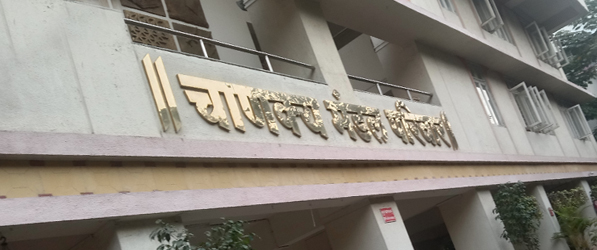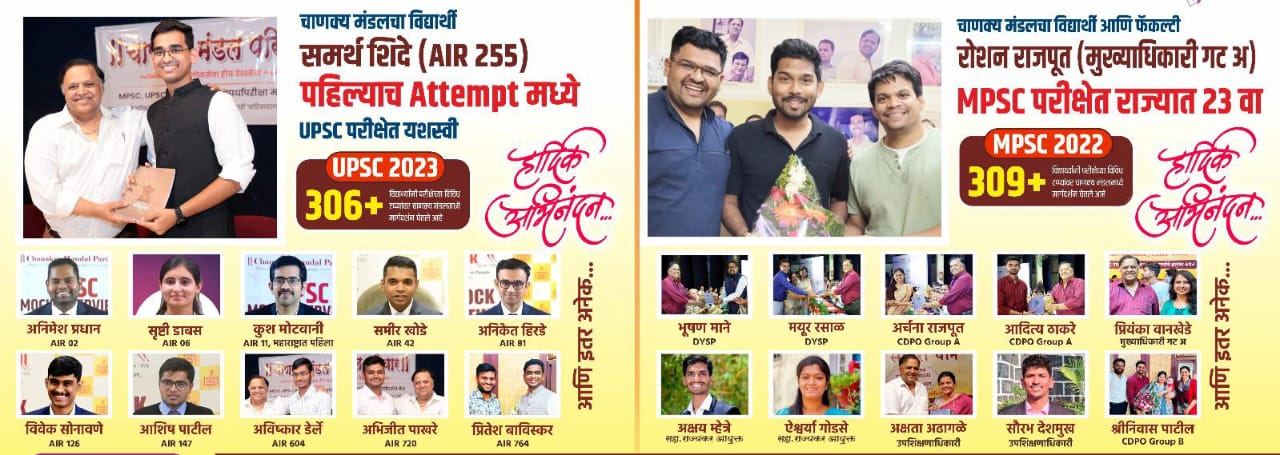Why “Chanakya”?
Arya Chanakya: Perhaps the pioneering prime bureaucrat- scholar. The thinker who realized the dangers of foreign invasion. Chanakya Mandal Pariwar has tried to awaken a corrupt exploitative, anti-people and inefficient regime. When the power-drunk corrupt regime refused to wake up, he sacrificed his career, went into wilderness organized and inspired the young generation from the commonest of the common strata of society.
He affected the political revolution which unified India and repulsed the foreign invasion. Having achieved all this he renounced all positions of power and wrote the eternal treatise ‘Artha Shastra’.
Sociology Paper 2
खण्ड ‘A’ / Section A
1.
निम्नलिखित मे से प्रत्येक का लगभग 150 शब्दों में लिखिए :
Write on the following in about 150 words each :
(a) भारतीय समाज के अध्ययन के लिए एम. एन. श्रीनिवास के संरचनात्मक-प्रकार्यवादी उपागम की विस्तारपूर्वक व्याख्या किजिए।
Elaborate on M. N. Srinivas’s structural-functionalist approach to the study of Indian society.
10
(b) क्या आप सहमत हैं की भारत में कृषि वर्ग संरचना परिवर्तित हो रही है ? दृष्टांतों के साथ अपने उत्तर की पुष्टी किजिए।
Do you agree that the agrarian class structure in India is changing ? Justify your answer with illustrations.
10
(c) भारत में आदिवासी समुदायों के एकीकरण की चुनौतियों को स्पष्ट किजिए।
Elucidate the challenges of integration for tribal communities in India.
10
(d) परिवर्तनशील भारतीय समाज के संदर्भ में आंद्रे बेतै की सुसंगत (हार्मोनिक) तथा विसंगत (डिसहार्मोनिक) सामाजिक संरचनाओं की अवधारणाओं को आप किस प्रकार देखते हैं ?
In the context of the changing Indian society, how do you view Andre Beteille’s conceptions of harmonic and disharmonic social structures ?
10
(e) लीला दुबे की “बीज तथा भूमि” की अवधारणा को समझाइए।
Explain Leela Dube’s concepts of “Seed and Earth.”
10
50
2.
(a) भारतीय समाज की समझ के लिए जी.एस.घुर्ये के भारत विद्यात्मक (इंडोलॉजिकल) उपागम का आलोचनात्मक परीक्षण किजिए।
Critically examine G. S. Ghurye’s Indological approach to the understanding of Indian society.
(b) जाति व्यवस्. की बदलती प्रकृति को उपयुक्त दृष्टांतो सहित विस्तार से बताइए।
Elaborate on the changing nature of caste system with suitable illustrations.
(c) भारत में धार्मिक अल्पसंख्यकों की समस्याओं की चर्चा किजिए तथा उन्हें हल करने के उपाय सुझाइए।
Discuss the problems of religious minorities in India and suggest measures to solve them.
10
50
3.
(a) योगेन्द्र सिंह की ‘भारतीय परम्परा के आधुनिकीकरण’ पर थीसिस का आलोचनात्मक परीक्षण किजिए।
Critically examine Yogendra Singh’s thesis on ‘Modernisation of Indian Tradition.’
(b) एक वैचारिक प्रणाली के रूप में पितृसत्ता के भौतिक आधार पर चर्चा किजिए।
Discuss the material basis of patriarchy as an ideological system.
20
(c) भारत में अस्पृश्यता के विभिन्न स्वरूपों को समझाइए।
Explain different forms of untouchability in India.
10
50
4.
(a) भारतीय राष्ट्रवाद की वृद्धी की सामाजिक पृष्ठभूमि का परीक्षण किजिए।
Examine the social background of growth of Indian nationalism.
(b) यह समझाइए की भूमि-सुधार किस प्रकार वांछनीय कृषि रूपांतरण ला सके।
Explain how land reforms brought about desired agrarian transformation.
20
(c) भारत में ग्रामों के अध्ययन करने के दौरान आने वाली चुनौतियों की चर्चा किजिए।
Discuss the challenges during village studies in India.
10
50
खण्ड ‘B’ / Section B
5.
निम्नलिखित मे से प्रत्येक घर लगभग 150 शब्दों में लिखिए :
Write on the following in about 150 words each :
(a) महिला सशक्तिकरण के लिए कानून की एक महत्तपूर्ण उपकरण के रूप में चर्चा किजिए।
Discuss law as an important instrument for women’s empowerment.
10
(b) भारत में धर्म-निरपेक्षीकरण की विभिन्न समझों का परीक्षण किजिए।
Examine different understandings of secularization in India.
10
(c) भारत में अनौपचारिक क्षेत्र की वृद्धी को आप किस प्रकार देखते है ?
How do you view the growth of informal sector in India ?
10
(d) लोकतंत्र को शक्तिशाली बनाने में दबाव समूहों की भूमिका की चर्चा किजिए।<
Discuss the role of pressure groups in strengthening democracy.
10
(e) ग्रामीण भारत में गरिबी उन्मूलन में सहकारिता क्या भूमिका निर्वाह करती है ?
What role do co-operatives play in poverty alleviation in rural India ?
10
50
6.
(a) परिक्षण किजिए की क्या ग्रामीण बंधन अभी भी एक सामाजिक यथार्थता के रूप में जारी है। अपना तर्क दिजिए।
Examine whether rural bondage still continues to be a social reality. Give your argument.
(b) नृजातीयता को परिभाषित किजिए। भारत में नृजातीय आंदोलनों की वृद्धी के लिए उत्तरदायी कारकों की चर्चा किजिए।
Define ethnicity. Discuss the factors responsible for the growth of ethnic movements in India.
20
(c) राजनीतिक अभिजात्यों की संरचना की परिवर्तनशील प्रकृति की चर्चा किजिए।
Discuss the changing nature of structure of political elites.
10
50
7.
(a) “समाज में समानता प्रोत्साहित करने के स्थान पर, वर्तमान शिक्षा व्यवस्था ने स्वयं सामाजिक-आर्थिक अमानताओं में वृद्धी करने में योगदान दिया है।” टिप्पणी किजिए।
“Instead of promoting equality in society, the present system of education itself has contributed to increased socio-economic disparities.” Comment.
(b) प्रवास की संरचना में हाल के रूझानों पर चर्चा किजिए ।
Discuss recent trends in the structure of migration.
20
(c) मलिन बस्तियों से सम्बन्धित वंचनाओं के विभिन्न स्वरूपों की चर्चा किजिए।
Discuss different forms of deprivation associated with slums.
10
50
8.
(a) भारत में दलित आंदोलनों में शामिल विभिन्न मुद्दों को सामने लाएँ।
Bring out the various issues involved in Dalit movements in India.
(b) ‘विकास तथा पर्यावरण’ के मध्य द्वंद्वात्मकता का आलोचनात्मक परीक्षण किजिए।
Critically examine the dialectics between ‘development and environment.’
20
(c) औद्योगिक श्रमिक-वर्ग की परिवर्तनशील प्रकृति की चर्चा किजिए।
Discuss the changing nature of Industrial working class.
10
50
 CTS
CTS  Donate
Donate 


